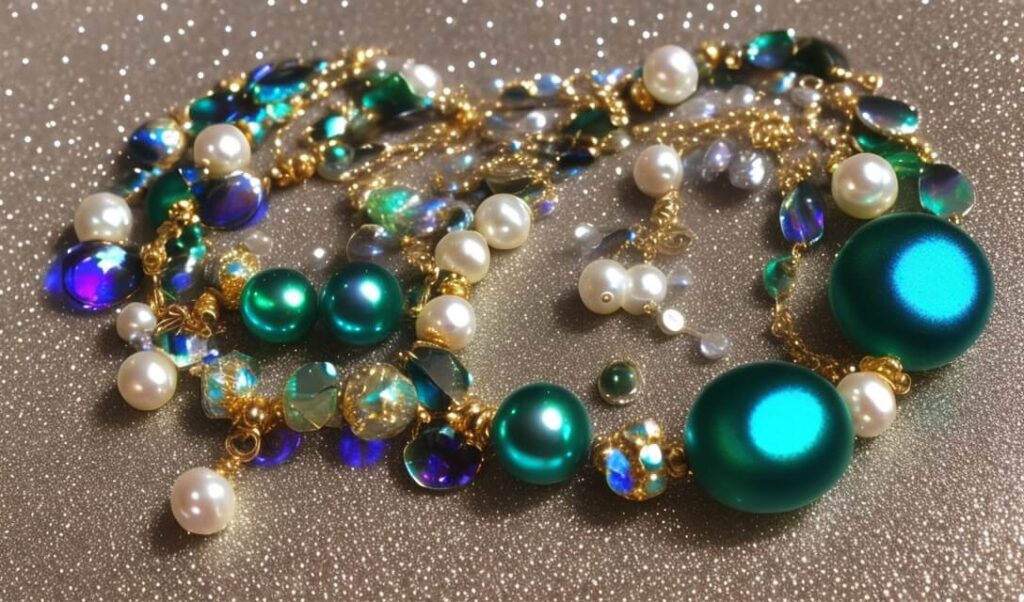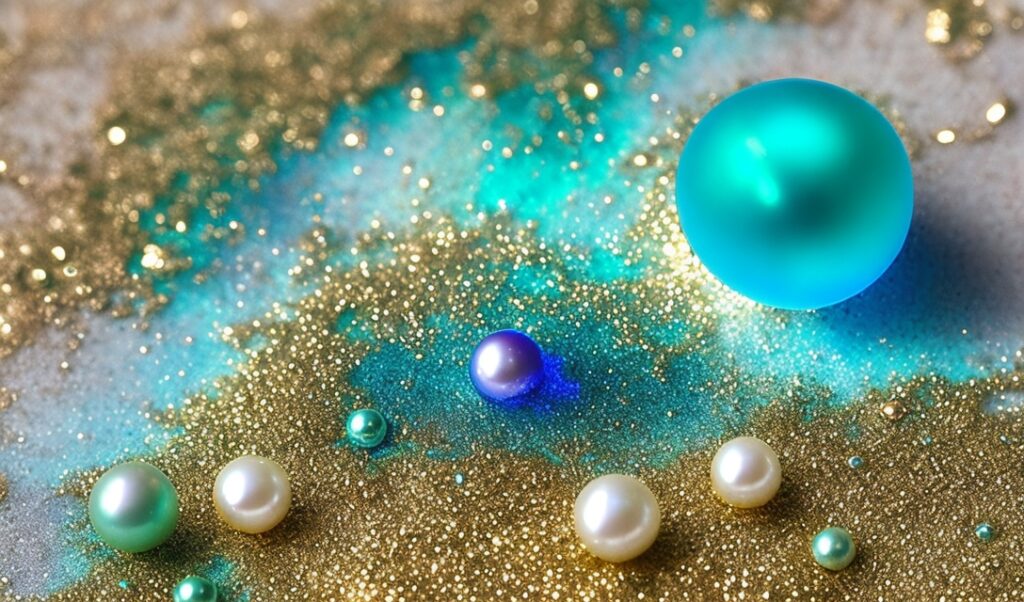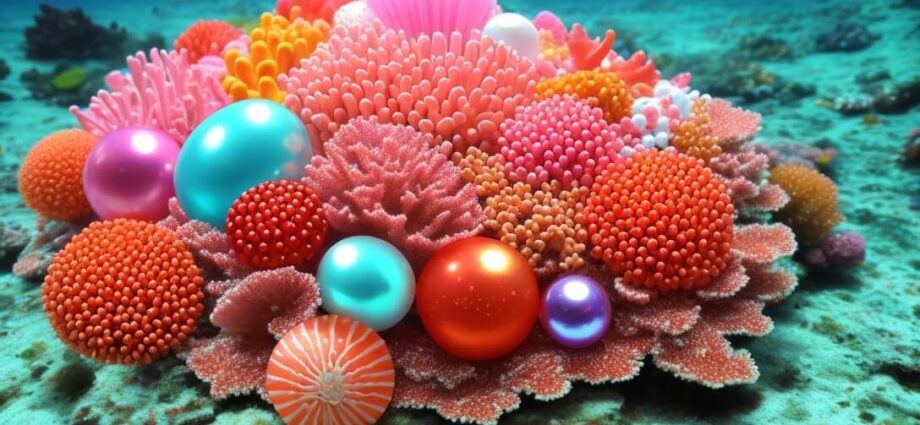Pearls, known as “teardrops of the moon,” have mesmerized humanity for centuries. Their allure transcends time and culture, making them one of the world’s most prized natural treasures. But what is it about pearls that make them so captivating? Is it their delicate luster that mimics the soft glow of the moon, their rare formation deep within the ocean’s belly, or perhaps the simple fact that they are the only gemstones created by a living organism? Among these alluring characteristics, the topic of our discussion is the most expensive pearl. Are pearls expensive? The answer lies in the nuances of their features, including size, shape, luster, and perhaps most intriguingly, their color.
Pearls are formed when an irritant, such as a small parasite or a piece of shell, becomes trapped inside a mollusk. To protect itself, the mollusk coats the irritant with a substance called nacre, layer upon layer, creating a pearl over time. Pearls have been admired for their beauty and rarity since ancient times, and they have a long history of association with wealth and power.
Pearls vary in price significantly, with factors like type, size, shape, luster, surface quality, and color influencing their cost. And while all pearls hold a certain charm, the most expensive pearls are those that are rare and high quality. As for the question, are pearls expensive? They can be. Exceptionally high-quality pearls, especially those of rare colors, can fetch prices in the hundreds of thousands, even millions, of dollars.
We’re now on a quest to discover the most expensive pearl color. As the journey unfolds, you’ll uncover the fascinating world of pearls—their allure, their rarity, and how the varying hues of these oceanic gems dominate the luxury market.
The Allure and Rarity of Pearls

Pearls have captivated human fascination for millennia, largely due to their natural beauty and the mystery surrounding their creation. But how much is a real pearl worth? To understand the worth of a pearl, it’s essential to delve into what makes a pearl a pearl—the factors that add to their charm and justify their price tag, especially when discussing the most expensive type of pearl.
A real pearl’s value is determined by a combination of its size, shape, color, luster, surface quality, and nacre quality. Larger pearls are generally more expensive than smaller ones, and round pearls are usually more valuable than those of other shapes. However, the most important factor of all these is arguably the pearl’s luster, the shine that makes pearls so captivating. A high-quality pearl should have a bright, clear luster that makes it shine, almost as if it is glowing from the inside.
Next comes the factor of color, and this is where things start to get fascinating. The color of a pearl can significantly affect its price, and some hues are more prized (and priced) than others. However, the color preference can be subjective and varies according to fashion trends and cultural traditions. In general, though, pearls with unusual colors are often more valuable due to their rarity.
Pearls come in a myriad of colors, including white, black, pink, gold, blue, green, and even purple. The color of a pearl is determined by the type of mollusk that produces it, the thickness and number of nacre layers, and environmental factors like water temperature and quality. Given the variety and beauty of pearl colors, it’s easy to see why color is such a crucial aspect of a pearl’s value.
We’ve now set the stage to dive into the heart of our exploration—the most expensive pearl colors. As we traverse further, we’ll unveil the worth of some of the most sought-after pearls and what makes them so extravagantly priced.
The Most Expensive Pearls in the World

Pearls, given their beauty and allure, have naturally found their place in the records of the world’s most expensive gems. We often ask about the “world’s most expensive pearl” or the “most expensive pearl in the world,” but what exactly makes a pearl command such a lofty price?
The Pearl of Lao Tzu, also known as the Pearl of Allah, is often considered the world’s most expensive pearl. Found in the waters surrounding the Philippines, this pearl measures an incredible 9.45 inches in diameter and weighs approximately 14 pounds, making it the largest known pearl in the world. Its price is estimated at a whopping $100 million, but what truly makes it priceless is its extraordinary size and age—it’s believed to be over 600 years old!
In 2015, an enormous pearl discovered by a fisherman again in the Philippines was dubbed the “Giga Pearl”. Weighing an astonishing 75 pounds, it’s believed to have a value of around $90 million. Its size and its beautiful, unique cream color contribute to its staggering worth.
It’s not just the size that determines the value of these pearls, though. The history associated with them plays a massive role as well. For instance, La Peregrina, a pearl with a storied past of being passed through Spanish kings and queens, and even being owned by Napoleon Bonaparte’s brother, was sold for a whopping $11.8 million in 2011. A large part of its value comes from its historical significance and the famous owners it once had, rather than just its physical attributes.
These examples highlight the grandeur associated with the world’s most expensive pearls. They serve as perfect instances of the kind of impact a pearl’s size, color, historical significance, and uniqueness can have on its worth.
The Color Factor: Understanding Pearl Colors

Now that we’ve explored the allure and rarity of pearls and have met some of the world’s most expensive pearls, it’s time to delve deeper into the color aspect, which significantly contributes to the pearls’ value.
Pearls come in a vast range of colors, and while traditional white pearls are timeless classics, more exotic hues are often more valued because of their rarity. But what influences the color of a pearl? Three factors play a significant role: the type of mollusk, the color of the nacre inside the mollusk, and the water conditions in which the mollusk lives.
Color is often the deciding factor when purchasing pearls. Colors can range from the classic white to black, and virtually every color in between—cream, gold, green, blue, and even lavender. The most expensive pearl color usually falls into these unusual and rare categories. But it’s not just about the body color; the overtones (secondary color visible on the pearl’s surface) and orient (the shimmer of iridescent rainbow colors on or just below a pearl’s surface) also contribute to the final color that we perceive and thus the pearl’s ultimate value.
However, the question of the most expensive pearl color remains unanswered, and as we continue our journey, we’ll attempt to answer this in the forthcoming section.
The Most Expensive Pearl Color

When it comes to the most expensive pearl color, it’s a tie between the deep, dark allure of the Tahitian black pearls and the rich, radiant glow of the golden South Sea pearls.
Tahitian pearls, often referred to as “black pearls,” are not actually black. Instead, they display a spectrum of colors from dark grey to a deep, iridescent peacock green, with myriad overtones. The rarest and most valued of these Tahitian pearls are those with a true peacock or rainbow color, where a multitude of colors can be seen swirling on the surface of the pearl. Tahitian pearls owe their exotic colors to the black-lipped oyster, Pinctada margaritifera, native to the French Polynesian waters. Their high value is attributed to their rarity, size (they’re one of the largest pearl types), and their unique, dark colors.
However, the golden South Sea pearls give the Tahitian pearls a run for their money when it comes to the title of the most expensive pearl color. As the name suggests, these pearls are a radiant gold color, ranging from a champagne hue to a deep, rich gold. The most valued are those with a deep, intense gold color. The golden South Sea pearls, cultivated primarily in the Philippines and Indonesia, are produced by the gold-lipped oyster, Pinctada maxima. These pearls are not only prized for their beautiful golden color but also for their large size and high luster.
Each of these pearl colors has its own allure, and their value is greatly influenced by trends, personal preference, and cultural significance. Yet, it’s their rarity, size, and the quality of the nacre that truly sets these colored pearls apart and makes them the most expensive pearl colors in the luxury market.
The Most Expensive Black Pearl

One of the most intriguing pearls in the market is the black pearl. It has been revered for centuries for its mystique and beauty, leading to the question: how much does the most expensive black pearl cost?
The Hope Pearl, one of the most famous black pearls, is valued at around $200,000 to $250,000. The Hope Pearl stands out not only for its size but also for its unique color gradient, transitioning from a bronze-gold hue to a deep greenish-black.
The most expensive black pearls are the Tahitian black pearls. These captivating pearls owe their name to the region they’re most famously from – Tahiti. But as mentioned earlier, these aren’t truly black. They come in a variety of dark shades, including gray, blue, green, and brown, with a beautiful peacock green being the most sought-after.
These black pearls derive their worth from their rarity, unique color, and the size that they can achieve. With their exotic dark hues and high luster, it’s no wonder that black pearls, especially those from Tahiti, are some of the most expensive pearls in the market.
Where Do The Most Expensive Pearls Come From?

A pearl’s origin can significantly impact its price, leading us to ask: where do the most expensive pearls come from? As we’ve learned, pearl color, size, and quality are all impacted by the type of mollusk and the environmental conditions in which they live. Hence, geographical location plays a crucial role in determining a pearl’s value.
Golden South Sea pearls, as we mentioned earlier, are mainly found in the waters surrounding the Philippines, Indonesia, and Australia. These regions are home to the gold-lipped Pinctada maxima oyster, which gives the South Sea pearls their large size and distinctive golden color.
Tahitian pearls, on the other hand, are exclusively produced by the black-lipped oyster, Pinctada margaritifera, native to the warm waters of French Polynesia. Tahiti is the commercial center of the region, which is why these pearls are referred to as Tahitian pearls, even though they are also cultivated in other areas within French Polynesia.
Another noteworthy region is the Persian Gulf, which was historically renowned for producing natural pearls of exceptional quality. The pearls from this region were highly sought after for their creamy white color and excellent luster. However, the natural pearl industry in the Gulf collapsed in the early 20th century due to overfishing and the advent of cultured pearls, but these pearls still hold a high place of honor in the history of pearl cultivation.
While pearls are cultivated in many other regions, including China, Japan, and the United States, these areas—French Polynesia, the South Sea, and the Persian Gulf—are the most noteworthy when it comes to producing some of the world’s most expensive pearls.
Conclusion
From the mysterious depths of the oceans and into the hands of jewelers and collectors, pearls symbolize elegance and timeless beauty. Their value is influenced by many factors, including size, luster, and especially color. When it comes to the most expensive pearl, the color is a significant contributor. The deep allure of the Tahitian black pearls and the radiant glow of the golden South Sea pearls reign supreme in the luxury market due to their rarity, size, and unique colors.
Pearls, whether white, black, golden, or another captivating hue, continue to mesmerize us with their beauty and elegance. Whether you’re an avid collector, a fashion enthusiast, or someone who simply appreciates natural beauty, pearls offer an unmatched allure. It’s clear that the journey to uncover the most expensive pearl color is not just about the price—it’s also about the history, the process, and the lore that surrounds these magical gems of the sea.
So, why not dive into this enchanting world of pearls? Who knows, you may find a color that not only complements your style but also resonates with your soul.
